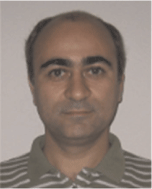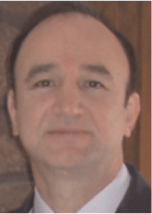Quantitative analysis of seismic response to total organic content and thermal maturity in shale gas plays*
E. Hassan Zadeh A , R. Rezaee A and M. Kemper BA Curtin University of Technology.
B Ikon Science AP Limited.
The APPEA Journal 51(2) 704-704 https://doi.org/10.1071/AJ10084
Published: 2011
Abstract
Although shales constitute about 75% of most sedimentary basins, the studies dealing with their seismic response are relatively few, particularly for the organic rich shale gas. Mapping distribution of shale gas and identifying their maturation level and organic carbon richness is critically important for unconventional gas field exploration and development.
This study analyses the sensitivity of acoustic and elastic parameters of shales to variations in pore fluid content. Based on the effective medium theory a rock physics model has been made by inversion of the shale stiffness tensor from sonic, density, porosity and clay content logs.
Due to the lack of a generally agreed upon fluid substitution model for shale, a statistical approach to Gassmann’s Model using effective porosity in the near boundary conditions, has been developed to account for shale. Fluid substituted logs—for a variety of maturation levels—and gas saturations were generated and used to make the layered earth models. AVO and seismic forward modelling were performed using the rock physics modelled and the fluid substituted logs on layered models.
As part of seismic forward modelling, simultaneous inversion is performed for each model to generate P-impedance, S-impedance and density volumes. The sensitivity of the models were analysed by histogram, cross plotting, cross section highlighting and body checking techniques. This study showed a dramatic hydrocarbon content effect—specifically gas— in the seismic response of shales.

Ebrahim is a senior QI geophysicist at Ikon Science and has more than 10 years of experience in reservoir characterisation and quantitative interpretation. He is interested in seismic aspects of shale gas plays. Member: Unconventional Gas Research Group, Curtin University. |

Reza Rezaee is an associate professor at Curtin’s Department of Petroleum Engineering and has a PhD in reservoir characterisation. He has more than 20 years’ experience in academia and industry. During his career he has been engaged in several research projects supported by national and international oil companies. These commissions, together with his supervisory work at various universities, have involved a wide range of achievements. He has supervised more than 50 MSc and PhD students during his university career to date. His research has been focused on integrated solutions for reservoir characterisation, formation evaluation and petrophysics. He has used expert systems such as artificial neural networks and fuzzy logic, and has introduced several new approaches to estimate rock properties from log data where conventional methods failed to succeed. He is presently focused on unconventional gas including gas shale and tight gas sand studies, and is the lead scientist for the WA:ERA (EIS) Tight Gas and shale gas research projects. |

A petroleum engineer/geophysicist with 22 years’ experience in geophysics, petrophysics and reservoir engineering. The first 13 years were spent with Shell International, initially in The Hague and later in London, during which time Michel made contributions to the interface between petrophysics and geophysics. In May 1999, Michel became team leader petrophysics/petroacoustics at Ikoda Limited, working on a wide variety of projects. It is during this time that RokDoc—now Ikon Science’s main software product—started. Within Ikon Science (since 2001), as Group technical director, he has been responsible for further RokDoc development, R&D and QA for Rock Physics/QI methods throughout the company. Michel is a honourary research fellow of the University of Aberdeen, and is now based in Asia Pacific. |
References
Bowman, T., 2010—Direct method for determining organic shale potential from porosity and resistivity logs to identify possible resource plays. AAPG Annual Convention, New Orleans, LA, 11 – 14 April, Search and Discovery Article #110128.Passey, Q.R., Creaney, S., Kulla, J.B., Moretti, F.J., and Stroud, J.D. (1990). A practical model for organic richness from porosity and resistivity logs. AAPG Bulletin 74, 1,777–94.
Prasad, M., MBA, K., McEvoy, E., and Batzel, M., 2009—Maturity and impedance analyses of organic-rich shales. SPE Rocky Mountain Petroleum Technology Conference, Denver, Colorado, 14 – 16 April, SPE 123531.
Zhao, H., Givens, N.B., and Curtis, B. (2007). Thermal maturity of the Barnett Shale determined from well-log analysis. AAPG Bulletin 91, 535–549.


